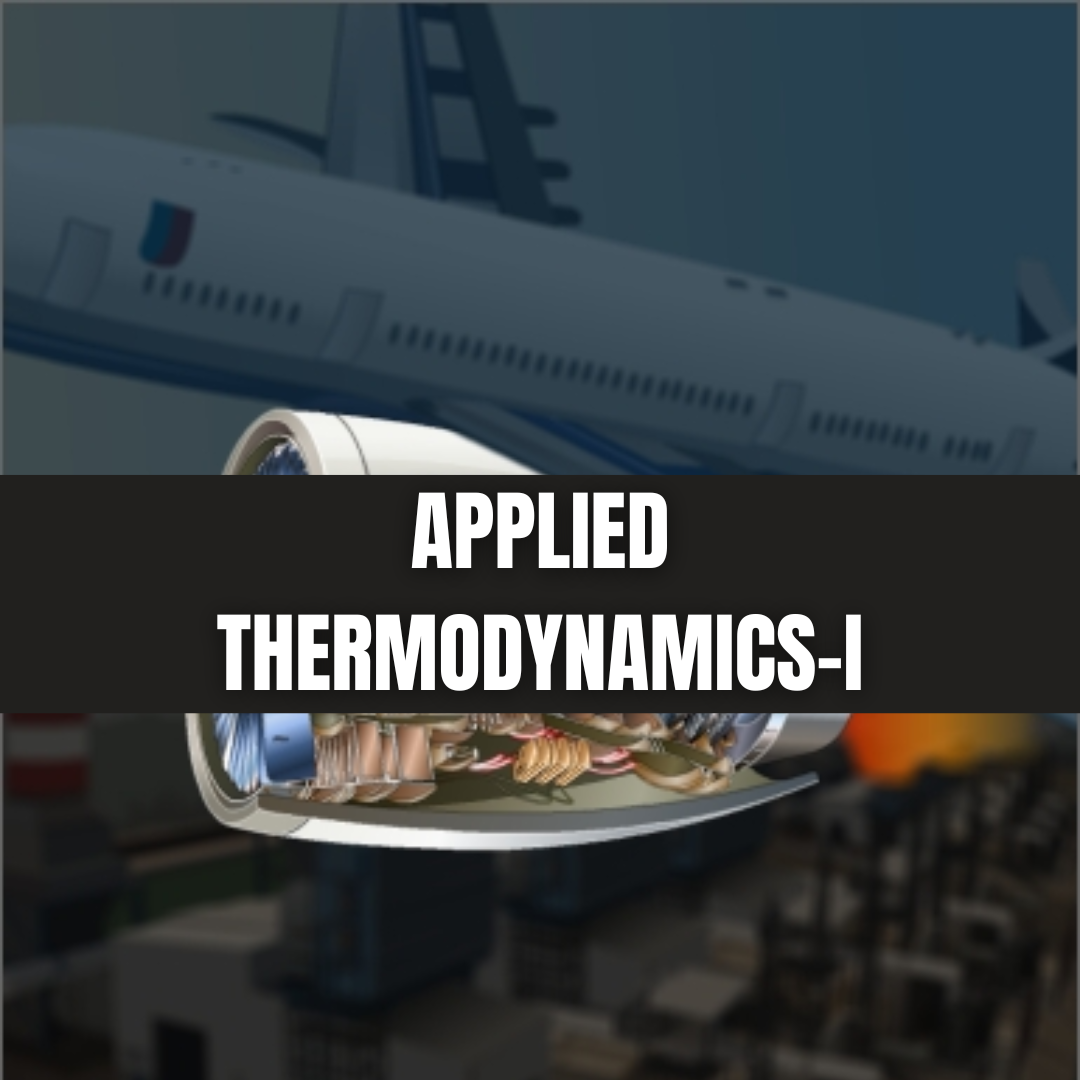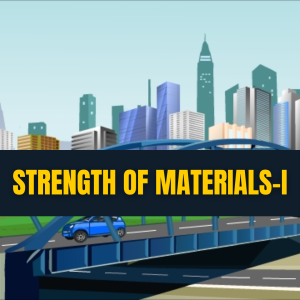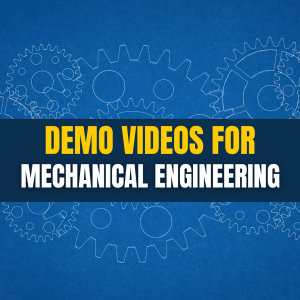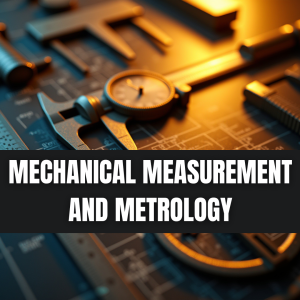Applied Thermodynamics-I
13.98$
About the course
Applied Thermodynamics deals with the Engineering Applications of Statistical Thermodynamics. The subject unfolds the study of Basic Operating Cycles of Internal and External Combustion Engines and their Working Substance. It also covers the analysis of different types of Boilers, Turbines, Nozzles, and Condensers etc.
What will you learn?
The complete online syllabus of this course comprises 8 Learning Modules | 222 Topics of Learning | 10 Hours of Learning | 56 Assessments
Module
- Fuels & Combustion
- Properties Of Pure Substance
- Introduction to IC Engine
- Steam Generators
- Vapor Power Cycle
- Steam Nozzles
- Steam Turbines
- Steam Condensers
Topics of Learning
- Different types of Fuels
- Combustion Equations
- Theoretical Air and Excess Air
- Volumetric and Gravimetric Analysis
- Stoichiometric Air-Fuel ratio
- Orast Analyzer
- Enthalpy of Formation
- Heating or Calorific Values
- Adiabatic Flame Temperature
- Pure Substance
- P-V, T-S, P-T & h-S Diagram for Steam
- Critical & Tripple Point
- Latent Heat
- Degree of Superheat
- Degree of Subcooling
- Specific Volume
- Dryness Fraction
- Enthalpy at various Points
- Entropy at various Points
- Steam Tables & Molier Chart
- Steam Tables & Mollier Chart
- What is Heat Engine?
- External Combustion Engine
- Internal Combustion Engine
- Basic Components
- Terminologies
- Classification of IC Engine based on Various Parameters
- Four Stroke Engine
- Two Stroke Engine
- Four-Stroke vs Two-Stroke Engine
- Spark Ignition Engine
- Compression-Ignition Engine
- SI Engine vs CI Engine
- The Carnot Cycle
- Brayton Cycle
- The Otto Cycle
- The Diesel Cycle
- The Dual Cycle
- Comparison of Otto, Diesel, and Dual Cycles
- What are Fuel-Air Cycles?
- What is Actual Cycle?
- What is Valve Timing Diagram?
- Actual VT Diagram for Four-Stroke Engine
- Actual VT Diagram for Two-Stroke Engine
- What is Carburetion?
- Stoichiometric Air Fuel Ratio
- Mixture Requirement at Different Throttle Operation
- The Simple Carburetor
- Essential Parts of a Carburetor
- Cold Starting
- Fuel Injection Systems and its Requirements
- Air Injection System
- Solid Injection System
- Requirements of an Ignition System
- Spark Plug
- Firing Order
- Different Stages of Combustion
- Knocking
- Effects of Knocking
- Control of Knocking
- Different Stages of Combustion
- Knock in CI Engine
- Control of Knocking
- Comparison of Knock in SI and CI Engines
- Need of Engine Cooling and its Requirements
- Air Cooling System
- Advantages and Limitations of Air Cooling System
- Water Cooling System
- Advantages and Limitations of Water Cooling System
- Radiator
- Introduction Supercharging
- Types of Superchargers
- Methods of Supercharging
- Effects of Supercharging
- Limitations of Supercharging
- Introduction and Working
- Performance Parameters
- Engine Performance Characteristics
- Variables Affecting Performance Characteristics
- Introduction to Wankel Rotary Engine
- Design and Working Principle of Rotary Engine
- Reciprocating Engine vs Rotary Engine
- Advantages and Disadvantages of Rotary Engine
- Introduction to Steam Boiler
- Important Terms for Boilers
- Classification of Boilers
- Simple Vertical Boiler
- Lancashire Boiler
- Locomotive Boiler
- Babcock and Wilcox Boiler
- Stirling Boiler
- Comparison between Fire Tube and Water Tube Boilers
- La-Mont Boiler
- Once-Through Boiler
- Water Level Indicator
- Pressure Gauge
- Safety Valves
- Stop Valves
- Blow Off Valve
- Feed Check Valve
- Fusible Plug
- Superheater
- Economizer
- Air preheater
- Equivalent Evaporation
- Boiler Efficiency
- Boiler Trail
- Natural or Chimney Draught
- Calculation of Chimney Height
- Steam Power Plant and its working Cycle
- Carnot Cycle and its Limitations
- Basic Rankine Cycle
- Actual Rankine Cycle
- Comparison of Rankine and Carnot Cycles
- Modified Rankine Cycle
- Mean Temperature of Heat Addition
- Effect of Pressure, Temperature, and Vacuum on Rankine Efficiency
- Reheat Rankine Cycle
- Multistage Turbines and Reheat Factors
- Efficiencies of Multistage Turbine
- Regenerative Rankine Cycle
- Bleeding
- Regenerative Cycle with Single Feed Water Heater
- Combined Reheat-Regenerative Cycle
- Binary Vapour Cycle
- Combined Heat and Power Cycle
- Introduction to Steam Nozzle
- Types of Steam Nozzles
- Steam Flow through Nozzles
- Critical Pressure Ratio and Nozzle Choking
- Nozzle Efficiency
- Diameter of Throat and Exit for Maximum Discharge
- Metastable Flow-through Nozzle
- Introduction to Steam Turbines
- Classification of Steam Turbines
- Introduction to Impulse Turbines
- Velocity Diagram for Moving Blades
- Power Produced by Impulse Turbine
- Blade Velocity Coefficient
- Optimum Speed Ratio for Maximum Efficiency
- Need of Reducing Rotor Speed
- Velocity Compounding
- Pressure Compounding
- Pressure Velocity Compounding
- Introduction to Reaction Turbine
- Comparison between Impulse and Reaction Turbines
- Velocity Diagram for Moving Blades
- Power Produced by Reaction Turbine
- Degree of Reaction
- Optimum Speed Ratio for Maximum Efficiency
- Height of Blades of Reaction Turbine
- Efficiency of Steam Turbine
- Reheat Factor and Condition Line
- Introduction to Turbine Governing
- Throttle Governing
- Back Pressure Turbines
- Pass-Out or Extraction Turbine
- Methods of Blade Attachment to the Turbine Rotor
- Need Steam Condenser
- Elements of Steam Condensing Plant
- Classification of Steam Condensers
- Dalton’s Law of Partial Pressure
- Determination of Mass of Cooling Water
- Air Leakage in Condensers
- Methods for obtaining Maximum Vacuum in Condensers
- Vacuum Measurement and Vacuum Efficiency
- Condenser Efficiency
- Introduction to Air Pump
- Need of Cooling Towers
- Types of Cooling Towers
For a quick review, please watch our videos here 




